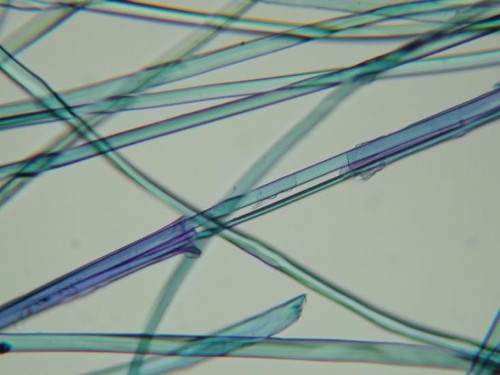Food Contamination Identification and Sourcing
Microtrace supports clients at every level of the food manufacturing and distribution process, from the identification of basic ingredients and chemical characterization of new formulations to packaging issues and quality control complaints.
Product contamination is an issue faced by all food manufacturers at some point. Our forensic investigations of food products include basic identifications of known or suspected foreign matter, verification of a material, tracking a contaminant to its source, or providing support for litigation. Whatever the purpose, our thorough analysis of food products and the alleged or actual contaminant(s) is always performed with the scrutiny intended to withstand the rigors of criminal forensic investigation.
Silky Smooth Chocolate
A confectionery was receiving recurring complaints of mold in one of their products. Microtrace was asked to investigate the complaints and identify the foreign material.
Upon receipt, numerous fibrous masses were observed, embedded in the product. A microscopical examination revealed that this fibrous material was not fungal in nature, but instead, it was composed of thin, proteinaceous fibers (see image above). With appropriate staining and examination by polarized light microscopy, the chemical nature of the fibers and their morphology were shown to be consistent with silk. This staining and microscopical observation also revealed the presence of a natural gum coating on several of the fibers in the sample. This coating, called sericin, is naturally extruded as a binding element between filaments of worm silk, and is removed prior to the commercial use of silk. These observations allowed us both to identify the foreign contaminant as raw (i.e., uncultivated) silk and to help the confectionery identify the source of this contamination. This permitted the quality management section to complete a full investigation in the context of their internal quality procedures and requirements of the FDA Food Safety Modernization Act (FSMA).
While some laboratories provide analytical results without context, this contamination case highlights Microtrace’s expertise as a dynamic laboratory that is focused on providing complete solutions that address our client’s questions to fullest extent permitted by science. In the context of the food industry, this includes identification, sourcing, and placing constraints on the point-of-introduction of foreign matter.
How May We Help You?
Contact usto discuss your project in more detail.









